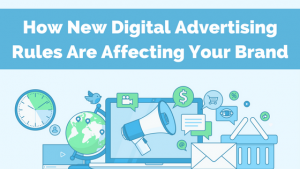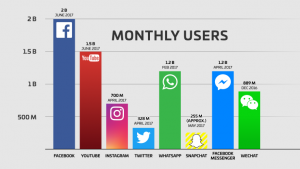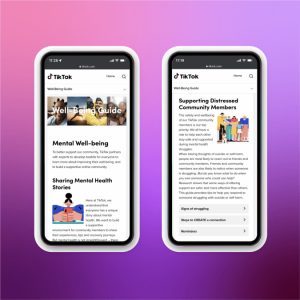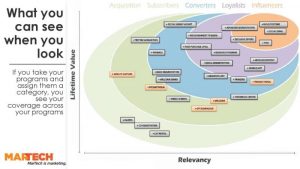Before you get caught up in the shiny new thing with all the bells and whistles, contributor John Steinert urges you to consider more accessible approaches. They may not be as trendy, but they’ll perform just as well.

Predictive Marketing analytics (PMA)… is enjoying piles of VC money and lauding sophisticated new technologies.
Predictive analytics isn’t especially new; it’s been around for more than 75 years. Scientist Norbert Wiener used it during World War II to create an anti-aircraft gun that could predict where the targeted airplane would go next. Yet all the current excitement seems to suggest that predictive has reached the point where it can now, somehow, radically improve performance in B2B.
As a B2B marketer, I like new tools. But I’ve learned the hard way that while many ideas have good points I can leverage, they are far from a sure thing. I am always careful navigating trendy environments because, while a new approach may help some companies, there’s always risk involved in applying it to my own situation. I like to know how quickly I will see real, significant value. In a pilot, I like to see indications of outcome improvement very early on.
One thing is clear with respect to predictive: it is shining a light on the importance of fact-based understanding. There is real evidence that an analytical approach to improving outcomes works better than other methods.
In this month’s column, I will take a quick look at what’s new in predictive for B2B, how you might evaluate a predictive proof of concept project, and how you could get the kind of results you’re seeking simply by employing some of the same principles via more direct, easy-to-explain approaches.
Why is B2B late to the predictive party?
There are three simple reasons these techniques have come late to B2B:
- Low transaction volumes: First is that the transaction volumes in B2B tend to be relatively small. Predictive modeling is most helpful when the scale of a situation is huge. When other approaches would be prohibitively time consuming and expensive, predictive modeling saves time and money. This is why predictive is common for things like polling – where the numbers are big and answers are needed soon (of course we’re all familiar with that fact that modeled predictions can prove inaccurate!)
- High decision-making complexity: Second, it gets harder to produce an effective model as situations become more complex. For example, modeling is used extensively for weather forecasting, but the science still sometimes leaves us without our umbrellas. In our B2B marketing world, the more complex a transaction (multiple decision-makers, product variability, etc.), the more difficult it is to create a model that will really pay out.
- Insufficient data and limited utility: Lastly, there’s the availability (or lack thereof) of the necessary data needed to create an effective model. There are two challenges here: number one, the primary source for the information necessary to create a model is the CRM system. I need to have enough data in there in the first place, and the data must be clean. Second, even if I have the right data and enough of it, a model built on that information may help me do better with prospects that are like my existing customers, but it can’t tell me about segments I haven’t yet pursued. To get to real white space, I’ll need to look at other approaches.
Simple business case thinking and complicated marketing realities
In my opinion, evaluating whether predictive is right or not for your organization can be as simple as thinking through the business and organizational cases for, and against, it.
Here are three basic questions I ask myself when evaluating whether to embark on any innovative effort:
- Can we afford it? If I put 10 percent of my budget into a predictive modeling project, how much do I need to get back from the investment such that my “investors” (internal constituencies) will want to continue with the approach? How fast can I get, say, a 5x return? How fast will I know if that improvement is sustainable?
- Do I have a strong base of support? Do I have patient investors? Does my organization have the patience for the work involved and the stomach for an experiment that could fail? Have I already comfortably embarked on experiments that could take 180 days or more to begin to yield meaningful results?
- Are there powerful alternatives? Is the new approach likely to deliver significantly more value to our company than we can get from an immediate focus on things I already understand and control?
Can you get the kind of results predictive offers by applying the thinking more directly?
In the Forrester Wave report, analysts Allison Snow and Laura Ramos have identified three areas where predictive modeling has shown promise for marketers. The exciting thing is that, by applying their guidance, you can have a huge impact on your own performance without any need for a modeling project at all. You can do this by focusing more intently on areas that have already been proven to enhance marketing results.
1. Partnering more effectively with sales
Assuming you’re tasked with helping improve sales outcomes, there’s much you can do to improve the value you deliver before you even try predictive. The first step to a better partnership with sales is to make sure you understand their focus and to do everything you can to align your plans and actions with it.
- Mutually reinforcing direction: Targeting and segmentation approaches should be 100 percent agreed.
- Leverage-able investments: Your tactical emphasis and mix should be visible in a calendar well in advance and the assets should be easily accessible for sales’ own use.
- Transparency for collaboration: Your KPIs and their connection to sales-owned KPIs should be correct, fully understood and regularly reported. Secrets don’t help. When something is not working, you need to work on making it right.
Underpinning all this, you need to make sure you’re both looking at the same set of information at all times to guide everyone’s decision-making. You can accomplish this simply and directly by agreeing on the data sources you will rely on. Make sure you have adequate demographic, firmographic, technographic and behavioral inputs. If you do, you probably have all you really need for a very effective partnership. There’s no reason to wait until you’ve built and validated a model.
2. Improving conversion rates
I couldn’t feel more strongly about my statement that you need to be sure your KPIs are correct. If your KPIs do not help improve sales productivity, you need to change them. If you are sending too many false positives to inside sales – marketing-qualified leads (MQLs) that don’t convert to opportunities – you need to acknowledge this and dissect what is going wrong.
- The power of “Demand Units” – The new SiriusDecisions Demand Unit Waterfall establishes how critical it is to understand active demand in general and “demand units” specifically – these are the groups involved in decision-making at prospect accounts. To improve conversion-to-opportunity, instead of relying only on traditional leads, you should look for sources of data that can uncover buying groups. Begin by changing your MQL definitions to reflect your better understanding of how deals really take shape in an account organization.
- Achieving cultural alignment – When you’re able to focus on accounts and buying groups, you will become more naturally aligned to sales by operating more like sales already does. And you’ll be better able to ensure what you pass contains richer, more valuable and actionable information. By proceeding like this, you will achieve higher conversion rates to SQL and they will realize better conversion to pipeline. No modeling required.
3. Upgrading the usefulness of your scoring approach
Getting appreciable value out of a scoring approach is much harder than we think. Scoring is supposed to tell us which leads are better than others. In fact, scoring is a type of predictive model. If you’re determined to invest in predictive modeling, you will eventually act on it in your marketing automation system through scoring. But think about this:
- Can a lead score tell you what’s really going on? Even if you have the bandwidth to really work on the “predictiveness” of your scoring, you’ll still encounter real challenges extrapolating from the score on a single individual to a level of understanding that allows you to compare the readiness of one account versus another. You will not know which account to focus on.
- How do you really know if a “lead” is any good? Without knowing what is actually going on at the account level, no matter how you score the lead, you can easily be wrong about the account. At the account level, you will create false positives. Furthermore, implementing scoring at the lead level tells you little about accounts that you have not been able to generate leads from. If you don’t have a lead, but the account is actually in-market, you’ve got a false negative, and you’ll miss that demand.
- What should really drive your scores? To make scoring much more powerful for your company, you need to look for ways to score at the account and buying unit level. You can do this with new sources of behavioral data that have become available over the last couple of years. This purchase intent insight can show you which accounts are active in your market, and whether you have generated leads from them! Unlike a predictive model that (once it’s built and validated) can suggest what type of account you should go after in the future, intent-based data sources tell you which to go after right now. The best ones tell you the account, the buying group, the individuals and even the tactics and content you should use to win.
To avoid risky buyer’s remorse, consider pursuing value that’s closer to what you know
I’ve got the scars to prove I’ve survived many failed marketing experiments. But I still go to work every day excited to try new things. Now, however, when I’m sizing up new ideas, I try to think about what I’ve learned from a lifetime of loving cars: making a good buying decision is about really knowing myself and my collaborators (family and friends).
It’s a fact that one minute after you’ve driven a new car off the lot, it’s lost 9% of its value. If you intend to stick with the vehicle for many years, this reality doesn’t matter much at all. But if you switch vehicles frequently, you should choose models that keep their value better.
As a pragmatic marketer, I’ve learned to wring as much value as I can out of what I’ve already got going. I add to this, when necessary, by choosing options that will help me get better results faster. And I do everything I can to make sure my recommendations are fully understood and strongly supported by the teams who are depending on me.
My biggest contribution right now is making sure I have the best possible data sources, that I’m leveraging them in all the ways I can, and that I am collaborating transparently and effectively with sales as we work together to find, grow and accelerate deals.
Some opinions expressed in this article may be those of a guest author and not necessarily Marketing Land. Staff authors are listed here.
Marketing Land – Internet Marketing News, Strategies & Tips
(50)
Report Post







